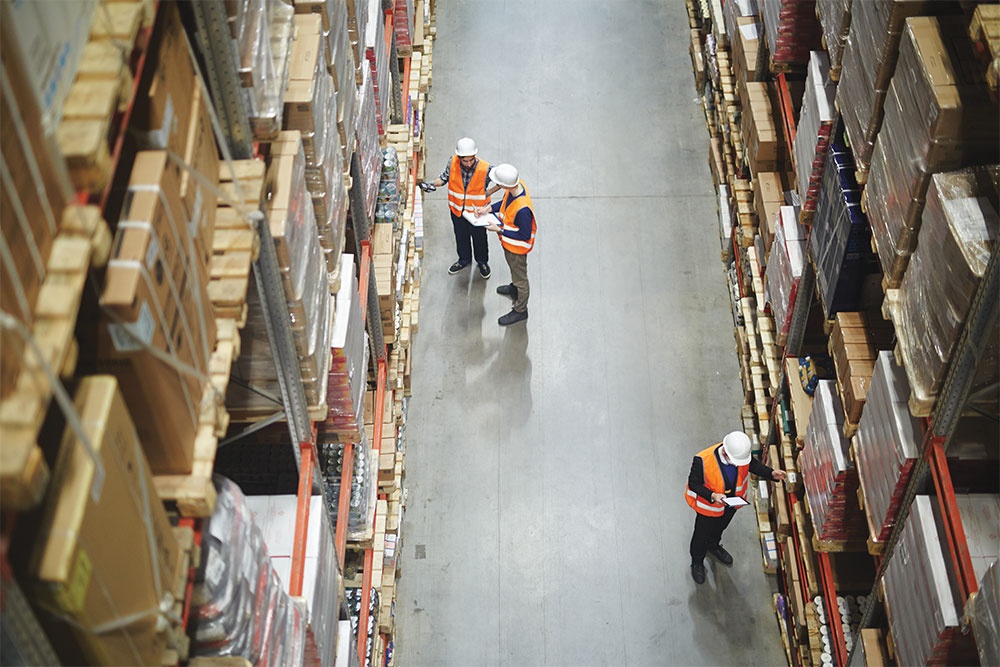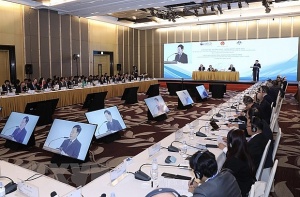Spillover effects of supply chains on future growth
 |
| Julien Brun, Managing partner, CEL |
Interestingly, India is also positioning in this race. Although India may be a bit more behind Vietnam at this stage, it will become a competitor in the next five years. This is because the electronic sector needs a certain geographical scope, meaning dedicated industrial clusters. Once strong clusters are established, they are here for long. So, the competitiveness of Vietnam needs to be highlighted now, or else Vietnam will lose opportunities.
Other sectors will also benefit from the migration out of China, particularly for manufacturing (furniture, tools, garments, footwear, industrial equipment, and others). It is difficult at this stage to predict which sector will benefit the most, but in any case it will be most beneficial for Vietnam, sometimes more than electronics, as electronics does not require so many workers like in more traditional industries. So for employment, it is also vital that other traditional industrial sectors are also competitive.
Recently, we have seen more and more new facilities, warehouses, and companies deciding to open offices in Vietnam or starting to hire senior executives for their operations just set up here. There are a number of drivers for growth in Vietnam, including economic reforms, free trade agreements, and the Law on Enterprises making it easier to start and run private businesses.
Meanwhile, Vietnam currently spends 6 per cent of its GDP on infrastructure while other countries in the region spend an average 2.3 per cent, making Vietnam the leading country in ASEAN in this area. However, 90 per cent of that spending comes from the public budget, and experts maintain that Vietnam has a gap between its current infrastructure and its aspirations of being a fast-growing economy. As foreign investment pours into Vietnam, along with the government’s determination to implement Industry 4.0, the current state of infrastructure is unable to keep up.
Consequently, the government introduced public-private partnerships to scale up infrastructure upgrades. As per the Global Infrastructure Hub, Vietnam needs on average $25-30 billion annually for infrastructure if the country wants to ensure growth. However, the national budget can only allow for $15-18 billion (at 7 per cent of GDP). Therefore, the country has to source the remaining sums from private investors.
 |
| Supply chain diversification is expected to be a major story in 2023, Photo: Shutterstock |
Innovation is a critical factor to make sure that Vietnam can get deeply integrated into the global supply chain further and make itself indispensable, leading to the country’s long term economic development. It starts with education as the future will need more engineers than workers and engineers that can create new things. Then we need to have more support programmes to incentivise companies to increase productivity with digital solutions, ultimately converting labour-based factories into fully automated, robot-based factories.
Singapore is a good model for this. A welding robot in a furniture factory can be as productive as over 20 welding workers, but would need a team of 2-3 robot engineers to operate it. Manufacturers should expect a series of events in 2023, in Vietnam including supply chain diversification, brewing recession, a series of disruptions, workforce challenges, and continuous barriers to digital transformation. Even that, more expectations will come from different stakeholders.
For example, the government would expect manufacturers to adjust minimum wages, or more commitment and actions from manufacturing sectors towards environmental, social, and governance standards for the circular economy and alternative energy. Manufacturers will also receive pressure from their customers in 2023, like being ready for the rebound with production capability, providing more data to customers for supply chain visibility, as well as connecting with suppliers for supply chain traceability.
Retail supply chains in 2023 would face key challenges in consumer demand with lower growth or even declining in both domestic and export markets that lead to higher inventory cost and negative cash flow; an unstable price index impacted from highly volatile fuel prices causing higher distribution costs; and unpredictable materials costs lower margins impacting growth and scale momentum.
Regardless of what may go up or down in 2023, supply chain professionals and business leaders still have a long list to prepare for 5-star supply chains: sustainability, visibility, agility, flexibility, efficiency. Increasing end-to-end visibility and resilience are the top two priorities for supply chain leaders now and in the future. Thus, key supply chain management trends in retailing in Vietnam continue to take place in inventory management and supply chain technology.
It is expected that in 2023 retailers would apply an agile’ strategy for their optimal inventory management with integrated supply chains and decentralised networks to serve customers faster. Retailers continue to apply more and more supply chain technology to be more efficient.
Retailers also continue to digitalise operations to achieve higher levels of visibility, automation, and integration, applying and taking advantages of advanced data analytics, AI, machine learning, and more for shorter-cycle forecasting, augmented business planning, and optimisation of end-to-end supply chains.
Nguyen Dinh Nam,CEO, IPA Vietnam
China’s policy to loosen COVID-19 pandemic restrictions with the highlight of reopening commercial flights will impact capital inflow and project implementation for investors from China, Taiwan, and Hong Kong. Starting from January 8, China will no longer conduct nucleic acid tests and centralised quarantine for all inbound travellers, and measures to control the number of international passenger flights will be lifted, among others. Vietnam Airlines officially reopened regular commercial flights between Vietnam and China in December after three years of suspension. In the first phase, it resumed three routes: Ho Chi Minh City-Guangzhou departing every Friday; Hanoi-Shanghai with flights on Mondays and Fridays; and Ho Chi Minh City-Shanghai departing every Wednesday. The move will immediately foster the implementation of unfinished projects that were delayed in construction due to the limit of entry visas for foreign experts. Many Vietnamese and foreign-invested enterprises have lamented the slow processing and multiple rejections of entry visas, which severely disrupts business. Loosening the restrictions will contribute to promoting implementation of newly registered projects by Chinese investors. China limits the number of people for business delegations overseas to a maximum of two people, but in order to start a project, businesses need the participation of the board members, experts, and perhaps others. Another highlight is that investment promotion activity will rally from its depression. In September 2022, a delegation of Taiwanese businesses organised the first business trip to Vietnam since 2020 to look for new venture opportunities. Now, the number of delegations is predicted to increase from the end of the first quarter of 2023. In contrast, authorities, localities, and consultancy firms will find it more convenient in organising investment promotion programmes in China, Hong Kong, and Taiwan. At IPA Vietnam, which is a small-scale unit, we are ready for such programmes. I believe that this activity will be live across the country. Restarting such activities will contribute to fostering newly registered capital which occurred during the past year. In 2022, just over 2,000 projects were granted investment registration certificates with new capital of almost $12.5 billion, down 18.4 per cent from last year. In general, I see many positive signs from the impact of China’s loosened policy on foreign investment capital attraction in Vietnam because China, Hong Kong, and Taiwan are among leading investors here. However, the shifting of overseas capital inflows from China to Vietnam may be not as high as hoped. In recent times we have heard that many groups were considering shifting their funding out of the country due to ongoing lockdowns dimming the outlook for the world’s second-largest economy. Thus, as China relaxes its restrictions, no doubt some groups may reconsider their shifting plans. |
 | OECD Forum: partnerships for resilient and sustainable supply chains Ministers have proposed further strengthening supply chains between OECD and Southeast Asia to be sustainable, equitable, and mutually beneficial, according to a recent forum. |
 | The importance of integrating policy to shore up supply chains One of the most urgent potential threats to Vietnam’s continued economic growth comes from a sustainability issue that did not get much air time at the COP27 climate summit in Egypt in November - supply chains. |
What the stars mean:
★ Poor ★ ★ Promising ★★★ Good ★★★★ Very good ★★★★★ Exceptional
Related Contents
Latest News
More News
- Partnerships drive sustainable finance (January 07, 2026 | 09:23)
- FDI inflows reach $38.42 billion in 2025 (January 06, 2026 | 17:55)
- $2.1 billion Nghi Son LNG-fired thermal power plant waits for investor (January 06, 2026 | 17:51)
- GE Vernova powers up Vietnam with first 9HA gas power plant in the country (January 06, 2026 | 16:54)
- Solid finish for manufacturing after volatile year (January 06, 2026 | 08:50)
- Meiko strengthens Vietnam operations with new PCB plants (January 06, 2026 | 08:49)
- Ho Chi Minh City backs $2 billion AI data centre with dedicated task force (January 06, 2026 | 08:43)
- PM sets January deadline for high-speed rail consultant (January 06, 2026 | 08:40)
- New decree spurs on PPP implementation (December 31, 2025 | 19:01)
- Global alliance develops $1 billion AI data centre network in Vietnam (December 30, 2025 | 10:08)


 Tag:
Tag:
















 Mobile Version
Mobile Version